What is it like to live a part of your life through your alter ego? Is this something reserved for performers, or are we all hiding behind the version of ourselves we want to portray to the world? Whether we use it to find inner strength, to turn on a creative switch, or to connect with a tribe or community, our alter ego can also help us escape while providing us with a platform for getting our message across. By looking at the experiences of a diverse group of people whose work allows them to openly inhabit a character other than their “real” self, what can we learn about our own boundaries at work and the potential power of our own alter ego?
Trevor McCarthy is a bonafide history buff. One of his jobs is running Kilmallock Medieval Tours where he shows people around his hometown of Kilmallock in Co Limerick. On the surface, it’s an unassuming town with one main street running through it but take a look at Kilmallock through McCarthy’s eyes on one of his weekly walking tours and you’ll discover its castle, medieval mansion ruins, a Dominican Priory, tombs dating back to Cromwell’s time, and tales of bards and barbarians, good rulers and bad.
McCarthy, too, has another side to him. As well as being an historian and a tour guide, he’s a Viking re-enactor. He’s one of the founding members of The White Horse Vikings, a living history group of men and women whose aim is to bring Hiberno-Norse Viking culture to life through historically accurate crafts, trading and, perhaps most thrillingly, live combat.
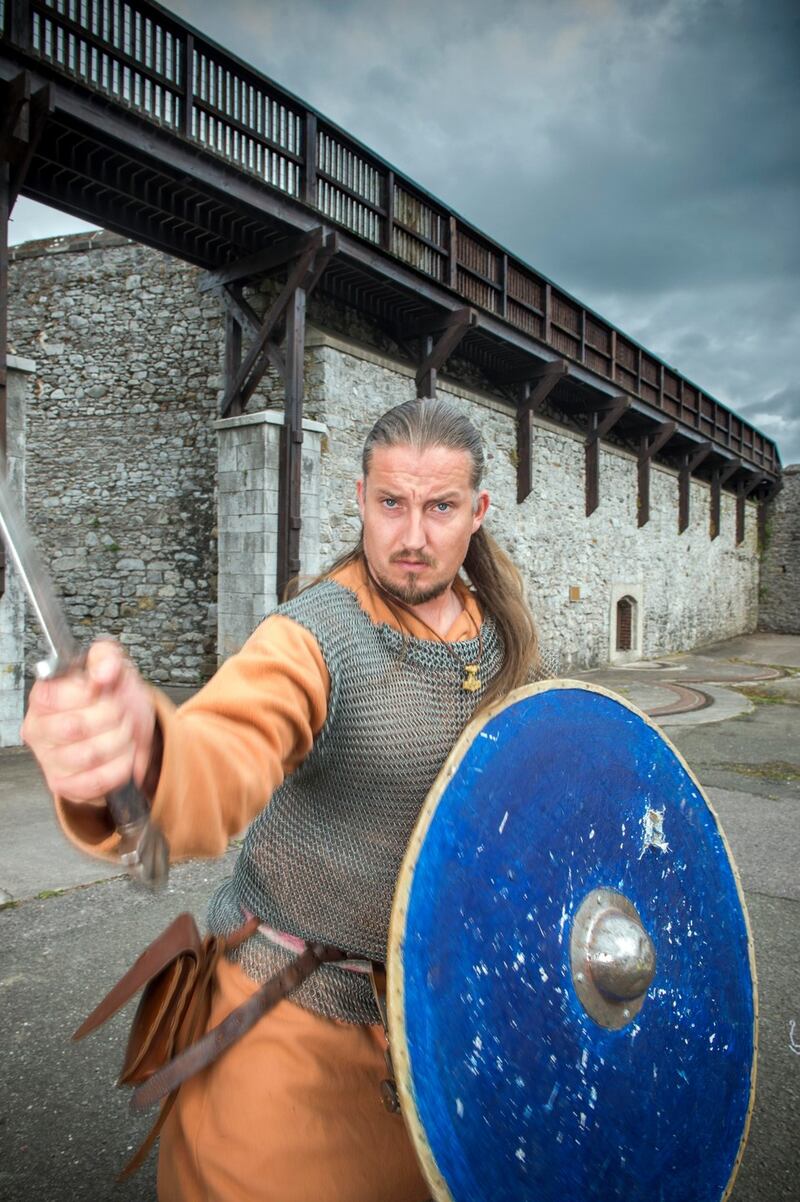
McCarthy travels to or hosts historical events as a Viking re-enactor, works on television documentaries, and also does Viking demonstrations for children in primary schools.
While the kids might not be particularly interested in Trevor The Historian, he says, they are way more likely to pay attention to Trevor The Viking.
The White Horse Vikings are just one of a number of similar groups operating in Ireland, and of hundreds around the world. “We travel from all over the world to go to re-enactment events,” says McCarthy, “and whether there are 30 re-enactors or 300 re-enactors taking part you’re immediately a part of a community. It gives you a sense of identity and confidence to go about your daily life knowing that you’re a part of something that is pretty big and pretty cool.”
As well as opening doors to job opportunities, McCarthy has found his personal confidence has grown thanks to his other life as a Viking warrior. “As my 21st century self, I’d be hugely self-conscious and I’m naturally very shy,” he says.
“I’m more comfortable dealing with everyday 21st century situations like making small talk with someone at the bank, which I would have found a little more difficult in the past. You have to put yourself out there to do something you love, and it takes courage to do that. So, in that way, my Viking alter ego helps my confidence.”
McCarthy breaks it down to a simple level when he thinks about the benefits of having his particular alter ego at work. “When someone asks my three year old daughter what I do, she says ‘My Daddy is a Viking.’”
If you've seen Queen of Ireland, the documentary about the performance artist and gay rights activist Rory O'Neill, you'll know that he got into drag as a young art student. He lived in Japan in his early 20s and it was there that the earliest prototype of Panti Bliss began to emerge.
Panti has developed over the years and she has grown alongside O'Neill. "She's gotten older," he says. "There are things Panti would have worn in the '90s that she would never wear now."
O'Neill explains how the gay drag vision is different from characters like Mrs Brown or Dame Edna; those characters don't tend to live outside of the world their creators have made for them, but drag queens are having real conversations with real people in the real world, says O'Neill. This is perhaps one of the reasons why the line between the performer and the performance is extremely blurred.
One of Panti’s most vulnerable and powerful moments was the Noble Call speech at the Abbey Theatre in February 2014, which has been viewed nearly a million times and inspired the support of RuPaul, Graham Norton and Madonna, among thousands more.
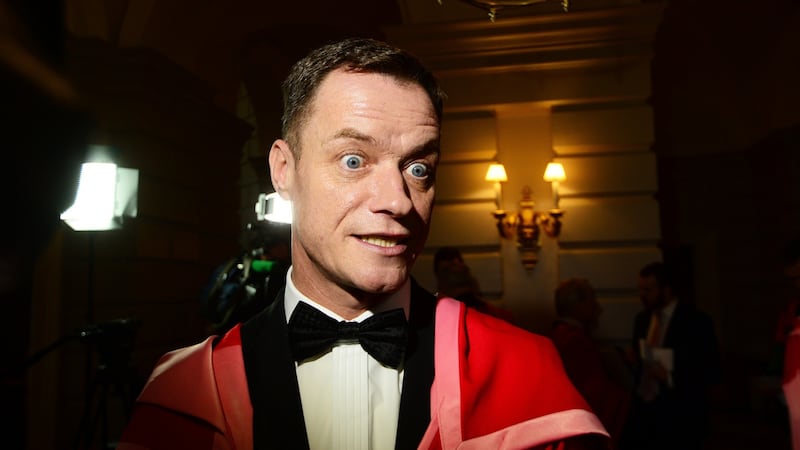
“If I had made that speech wearing a T-shirt and a pair of jeans, I don’t think it would have had the same effect,” says O’Neill. “Some people might try to dismiss Panti, as in ‘look at that bloke in a dress, that’s ridiculous.’ But, actually, because of what Panti looks like and what she does, it amplifies what I have to say.”
O'Neill sees Panti as being a different side of himself. "In the same way that the woman who goes to a job interview with her hair pulled back wearing flat shoes on a Monday is the same person who is in Ibiza in a boob tube with a G&T in her hand on a Friday, Rory and Panti are the same person," explains O'Neill.
"Neither is a lie, they are just a different facet of the same person. With drag especially, it's a heightened version of a person. I often compare it to a court jester in the way that the king would allow the court jester to say things that someone else would never be allowed to say. The same is true with how people interact with drag. Panti can say things that coming from Rory might seem rude or even mean, but coming from a big cartoon like Panti means that people are in on the joke."
Mary Kate Geraghty, the singer, songwriter and TV presenter, has been living alongside her alter ego MayKay since she was 19. Her band mates at that time in Fight Like Apes created an alternate world where they were, in Geraghty’s words, “crap superheroes” inspired by the imaginatively rich world of professional wrestlers.
To begin with, MayKay was a massive departure from who Mary Kate was personally, she says. "Putting the three dots on my face, back combing my hair or wearing hot pants were all to elevate my own confidence."
Using the alter ego as a way to draw on additional energy reserves is another positive that Geraghty notes about having an alternative identity. "It was easy for me to say this is Mary Kate who is sitting here backstage, tired and wrecked and wanting to go home to bed," she says, "but it was MayKay who was going out on stage."
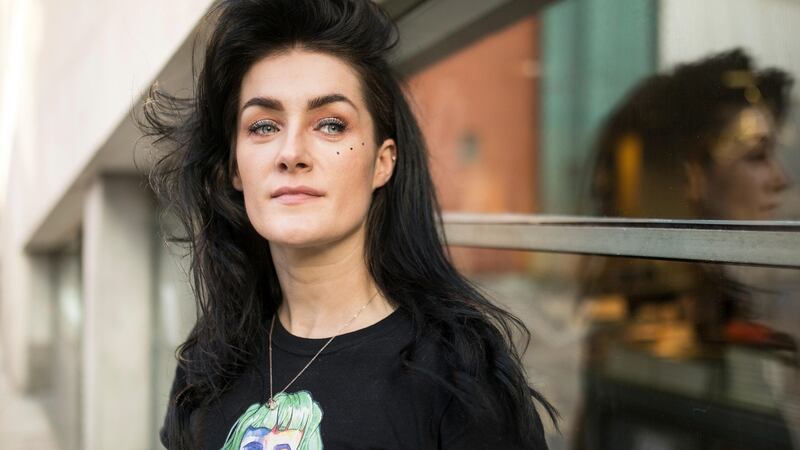
Her alter ego is now a member of electro-pop group Le Galaxie, who inhabit their own parallel universe of celestial warpaint and galactic synths. The band are embarking on an Irish tour in October. She is also a presenter on Other Voices on RTÉ, who will pop up in Ballina on September 28th and 29th. With Other Voices, the main focus is not on MayKay but on the bands she interviews and talks about.
As she develops as an artist and her career takes serendipitous turns, the lines between MayKay and Mary Kate have become more blurred. "As I get older," she says, "I understand my value and what that is now, and now Mary Kate and MayKay are one and the same."
For Geraghty, it’s all about communicating something to the world. “If changing your name or wearing a mask or a sparkly jacket helps you to communicate what it is that you’re here to communicate, then give it a go,” she says.
“It can be a very powerful thing. Sometimes, you don’t have to change anything – I know lots of people that don’t dress up or have a wild hair style, but there can be something that clicks for them on stage.”
Arlene Caffrey is an Irish pole dancing champion and owns her own pole dancing studio, The Irish Pole Dancing Academy. The other side of her work is bringing her alter ego, La Petit Mort, to life on stage as a burlesque performance artist.
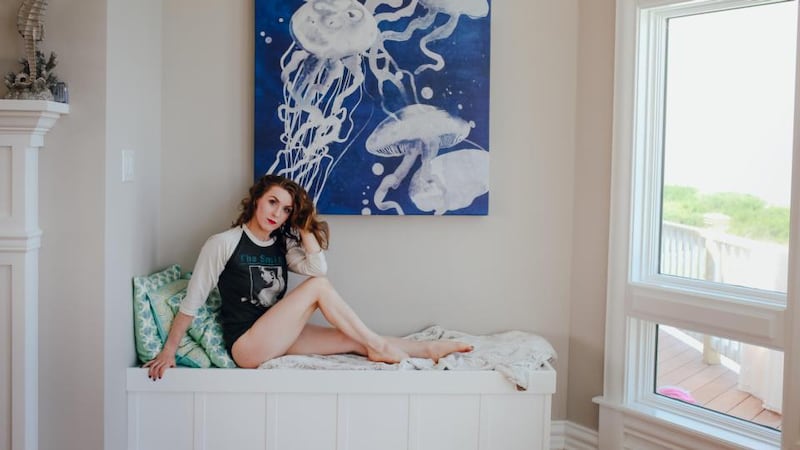
She won the 2017 Miss Burlesque competition, and will be performing at this year's grand final on September 15th in Dublin's Liberty Hall to hand over the crown to this year's winner.
She got into pole-dancing in 2006 as a fun way to get fit. After winning awards for pole-dancing, she began performing pole-dancing on stage with the Dublin burlesque group The Love Cats around 2010. La Petit Mort, Caffrey's burlesque character, made her stage debut in 2015.
“La Petit Mort is really dark and unapologetically sexy,” explains Caffrey. Is that different to the real Caffrey? “I’m a classic nerd. I’m really shy and introverted. My whole life I believed that I just wasn’t a sexy person. My alter ego lets me be ok with both parts – being a dweeb and also being an empowered, authentic, unapologetically sexy woman who is in comfortable in her skin. I’ve made peace with myself and my sexuality, and La Petit Mort taught me to stand up for myself. Pole dancing and burlesque give you more love and appreciation of what your body can do, and what you can do as a person.”
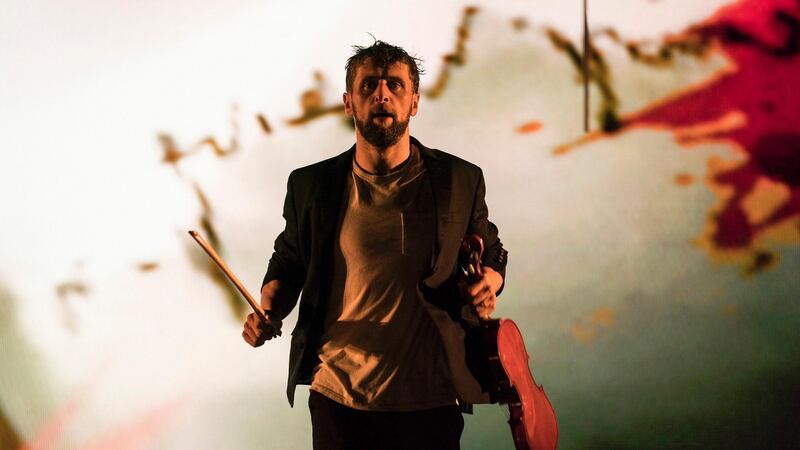
If you’re an Irish theatre goer, you’ll most likely have seen Aaron Monaghan on stage at the Abbey, as part of Druid Theatre productions, or through his own theatre company, Livin Dred.
"I think at the root of it all, acting is a way of expressing yourself," says Monaghan. "I think what I'm doing is an expression of who I am and what I think. That's certainly what most performers are doing – we're incredibly lucky that people pay money to sit down in a darkened theatre to hear us think"
When I speak to Monaghan, he is fresh from a play that had closed the previous day and is heading into rehearsals for his part as Estragon in Waiting for Godot which is travelling to Edinburgh International Festival.
He'll also be starting work on his up-coming role as Richard III in a Druid Theatre production which will be shown in Galway in September and The Abbey Theatre in October.
What is the impact on the actor of taking such deep dives into the thoughts of a character separate to themselves, often simultaneously or with overlap? "I always find that the character starts to manifest itself in my psyche and body in a way that I can never predict," he says.
“The rhythm of how I walk around town might change, or my mood could change. I could be very hyper or even depressed. The character can begin to take over. The lines sometimes do get blurred between me and the character because, for me, any character I’m doing on stage, whatever reaction happens, it has to be an emotion that comes from a truthful place in my life. It can’t just be me raising my voice and pretending to me angry.”
Monaghan is soft spoken in real life and naturally very shy. “I feel the most comfortable when I’m being the most honest on stage,” he says.
“Then if I walk out into the foyer and get lovely compliments, I feel very shy and I have to run away. For me, being on stage is a way to express a real truth that I’m not very comfortable with off stage, unless it’s with my family. There’s a saying that acting is the shy person’s revenge,” says Monaghan. “I think that’s absolutely true of me.”
* * *
"She explored further, down his body, tracing his fingers over abs so tight that her own quivered in response. And then she reached his belt. There was a moment, and then he said gruffly, 'Keep going.'" Open a Modern Romance Mills & Boon tome at any random page, and this is the type of joyful salaciousness you're likely to be greeted with. This particular passage is from The Virgin's Debt To Pay, a recent novel by best-selling author Abby Green. The back sleeve tells us that our heroine is "indebted to the billionaire . . . and he will collect."
Abby Green is the pseudonym of Daisy Cummins, a Mills & Boon author living in Dublin 8. As Abby Green, Cummins has written more than 40 books in the last decade and has been recognised for her steamy efforts by readers the world over, as well as her peers in the industry; she’s been awarded by The Romance Writers of America and is a USA Today bestselling author. She discovered the romance genre as a teen, when she picked up books by Jackie Collins and Dame Barbara Cartland in her grandmother’s house.
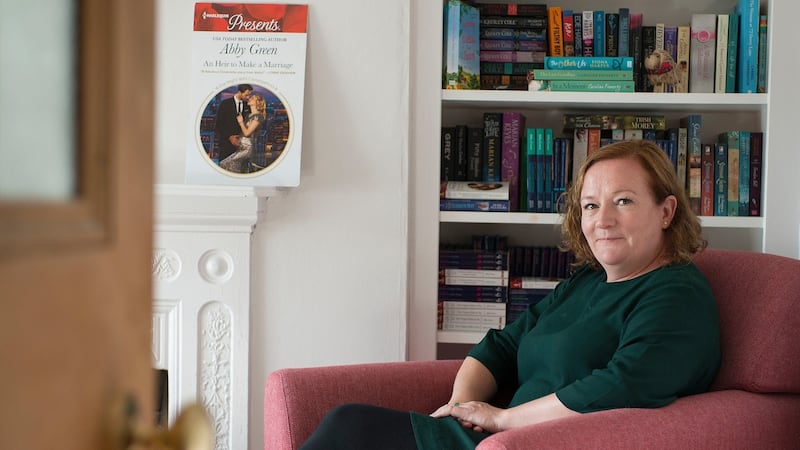
Cummins worked as as an assistant film director before she started penning books for the romance publisher, Mills & Boon (now 110 years old) which releases up to 100 one hundred new modern romance novels a month. Cummins chose the pseudonym before her first book was sold in 2006. Even though her friends and family know her as Daisy, she was christened Abigail and her father’s surname was Green. “I liked the romantic notion of having a pseudonym,” says Cummins.
“It also meant that I could separate my writing as Daisy Cummins from my Mills & Boon work, and I thought the name Abby Green suited the quintessentially English brand of Mills & Boon.” When she goes to romance writing fairs and events, her fans and peers in the industry know her as Abby, continuing the divide between her “real” and Mills & Boon personas.
An alter ego can allow a performer to tap into undiscovered creative facets of their personality, or it can give a person a power and confidence they didn’t realise was naturally there. Are there any drawbacks of living life through or alongside an alter ego?
“While having an alter ego at work may provide a healthy boundary and boost confidence in a role,” says counselling psychologist, mental health educator and freelance writer Niamh Delmar, “it is important it does not dominate to the detriment of an individual’s true self.
“The danger of this altered ego acting in a professional part is if the gap between it and the actual person becomes too wide. This incongruence may create stress, strains and confusion. For example, a comedian acting happy and funny at work and then grumpy at home, or the highly serious and responsible professional going wild in her free time. The more the public self overlaps with the private self the better for psychological well-being. Being authentic involves not just playing a part or wearing a professional mask. It is about having an integrated sense of self.”
Those of us with active social media accounts may recognise a disparity between our real lives and the life we portray online. “There’s a fine line between alter ego and creating a lie,” agrees Mary Geraghty aka MayKay. Having a successful alter ego is perhaps manifested by one that, as Rory O’Neill puts it, amplifies a part of who you naturally are or creates a platform for whatever message you’re trying to get out into the world.
Caffrey talks about the boundary between the alter ego and the self, too, in the form of praise and criticism as a performance artist.
“You have to separate yourself from your own hype,” she says. “Just because you’ve won an award or even several awards, or because people are paying you lots of nice compliments, and that they think your work is amazing – or even, conversely, that people think your work is shit – you need to separate your work from yourself. Your work is your work; it’s not a comment on your character.” Caffrey’s aim is to learn from praise and criticism and then move on.
Perhaps you have more in common with those working via the medium of alter egos than you think. “We’re all wearing masks all the time,” says O’Neill.
“There are very few people who get to see you without those masks off – maybe your lover. That’s perfectly normal. Because, who the f*ck are you really? Like, we’re all trying to figure out who we are. And who we are might change. We can feel different from one day to the next. My version is just an amplified version of everyone’s daily mask wearing.”











